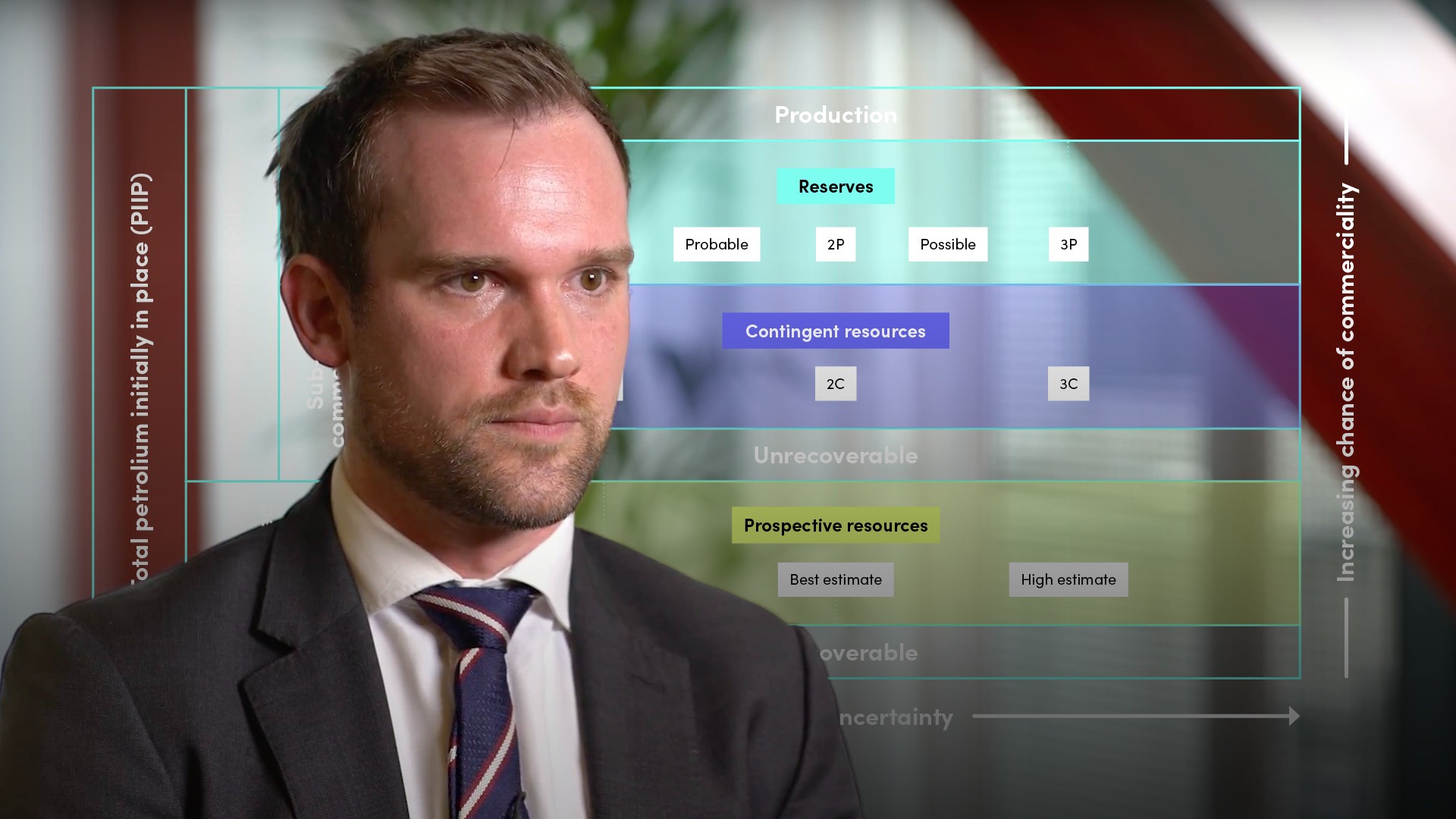
Financing Upstream Oil Operations

Dan Paterson
Oil & gas consulting
The oil and gas industry is a diverse industry that underpins many national economies. In this video, Dan focuses on the different sources of financing that are available for businesses within the upstream sector.
The oil and gas industry is a diverse industry that underpins many national economies. In this video, Dan focuses on the different sources of financing that are available for businesses within the upstream sector.
Subscribe to watch
Access this and all of the content on our platform by signing up for a 7-day free trial.

Financing Upstream Oil Operations
13 mins 6 secs
Key learning objectives:
Explain the stages of the upstream sector
Identify the different stakeholders involved and the risks they take
Discuss the different sources of financing and the impact of reserve reports when making an investment decision
Overview:
The Upstream sector involves developing fields in pursuit of commercially viable hydrocarbons. To achieve this, E&P companies are financed by stakeholders such as major IOCs who aim to pay out dividends to their shareholders. Further to this, investors, prior to financing, look for projections to determine viability, and this is enabled through reserve reports.
Subscribe to watch
Access this and all of the content on our platform by signing up for a 7-day free trial.
What are the different stages of the upstream sector?
- Exploration of hydrocarbons
- Drilling and appraisal – establishing the size and structure of the reservoir to determine the commercial viability of discoveries
- Development to commit capital to install infrastructure
- Production and Operations – produce hydrocarbon volumes safely
- Decommissioning and abandonment of the field – shutting down and removing existing infrastructure
How is the risk decreased throughout the stages?
During the exploration stage, there are no discovered hydrocarbons yet and volumes are considered prospective. When drilling, the result is either strike oil or encounter a dry well. At this stage, the certainty of the outcome is at its lowest and subsequently the risk is large.
The risk profile is reduced during appraisal drilling as the oil or gas has been proven to be present.
At the development stage, it becomes clearer and the certainty of outcome is increased. During this stage the project is de-risked through further engineering, finalising commercial contracts and securing financing to construct and install infrastructure, prior to operations.
Who are the stakeholders in the projects?
International Oil Companies (IOCs) – These are typically distinguished by multi-billion-dollar market capitalisations with a global presence. E.g. Exxon Mobil, BP and Shell. These companies are long-term focused and ensure strong cash flows to pay out dividends for their shareholders.
Mid-cap/Independents – Their core expertise is focused on exploration and production. They will attempt to target geographical regions or certain phases of the development cycle. These are generally entities listed on main stock markets. E.g. Tullow, Cairn and Premier.
Private-equity backed independents - These entities will focus on specific geographical regions or target a certain type of project that fits the overall investment thesis. Each private equity house will look to either IPO or sell their share over the long-term.
Small-cap explorers – Focused on exploration and have limited to little production. Their focus is to prospect and discover hydrocarbons to bring in a larger player to develop the field. However, companies will often have limited cash-generating operations. E.g. Kosmos, Eco Atlantic.
National Oil Companies (NOCs) – They represent and manage the host nation’s interests in the development of their natural resources. The NOCs hold the majority of the world’s hydrocarbon reserves. They traditionally partner with majors to jointly develop fields. E.g. ADNOC, Petrobras.
What measures are considered by investors prior to financing?
Reserves report - independently determines the commercial viability of the project or wider organisation to service debt obligations or produce a sustainable and attractive equity return.
- Quantifies hydrocarbon volumes by following PRMS guidelines
- Verifies production profile projections and reasonableness of proposed production costs
The report is used by company management, financial institutions and equity investors. Equity investors will consider Proven and Probable Reserves and may take a view on Contingent Resources as these volumes will represent the potential future growth story of the E&P company.
Field life is also considered which impacts financial ratios and debt tenor. Lenders will want to ensure that loans are repaid whilst the field is still economic.
What are the criteria for Reserves?
- Discovered
- Recoverable
- Commercial
- Remaining
What are the different sources of financing in the upstream sector?
Different types are available depending on the stage within the project lifecycle:
Exploration and appraisal – Given there is no discovered HC, at this stage, the company will:
- Issue equity to fund activities as it doesn’t have tangible assets
- Farm-out a portion of the field working interest to a larger peer or investor to fund drilling commitments
Development – Capital intensive and requires a large investment via:
- Corporate loans
- Reserves Based Lending (RBL) – used commonly by mid to large-cap independents
- Public or Private Bonds
- Private placements
- Mezzanine financing
- Project Finance
What are some examples of contingent resources?
- Projects for which there are currently no viable markets
- Where commercial recovery is dependent on technology under development
- Evaluation of the accumulation is insufficient to clearly assess commerciality
Subscribe to watch
Access this and all of the content on our platform by signing up for a 7-day free trial.

Dan Paterson
There are no available Videos from "Dan Paterson"



























